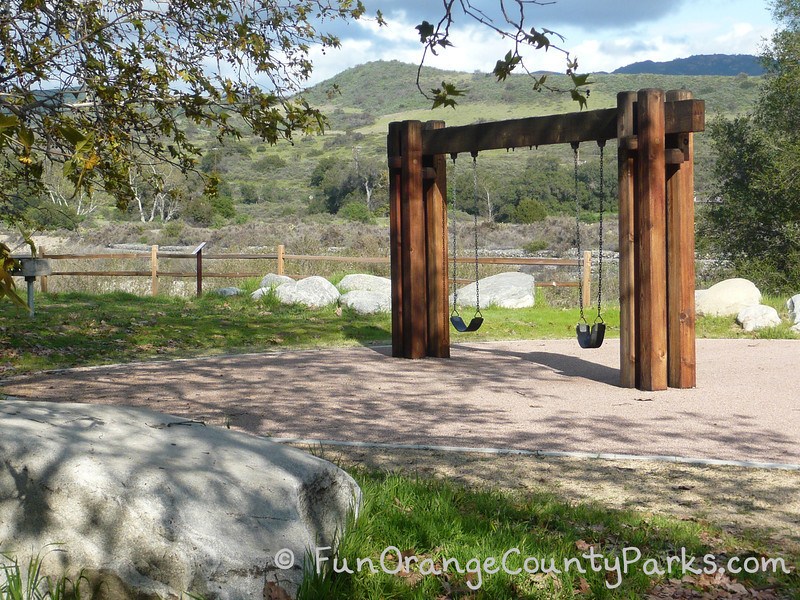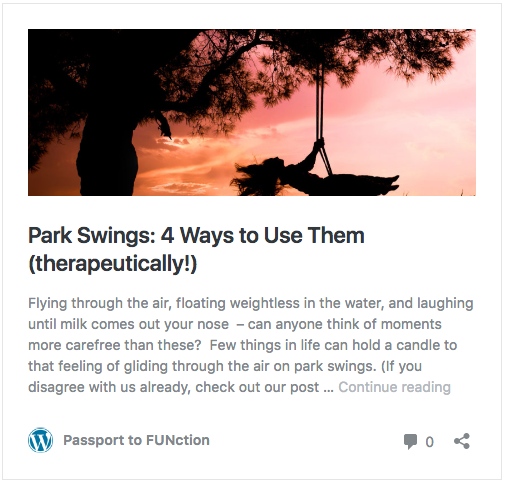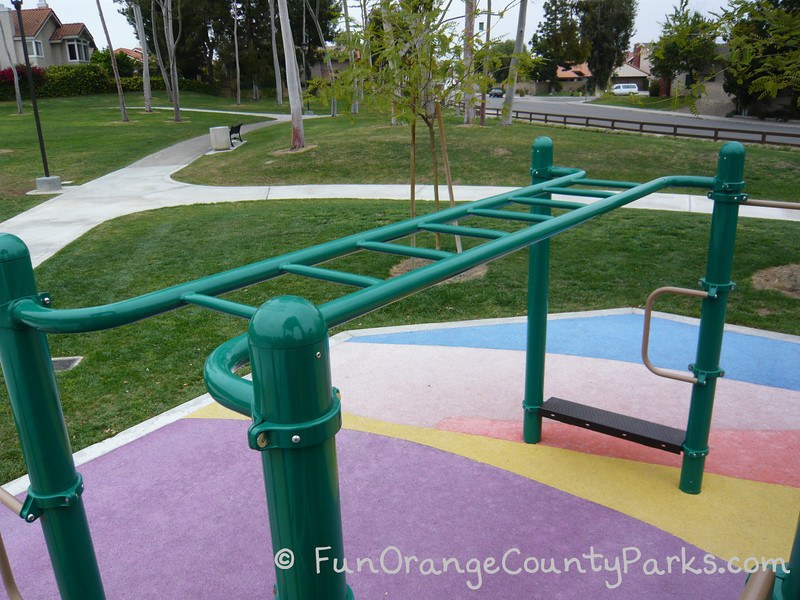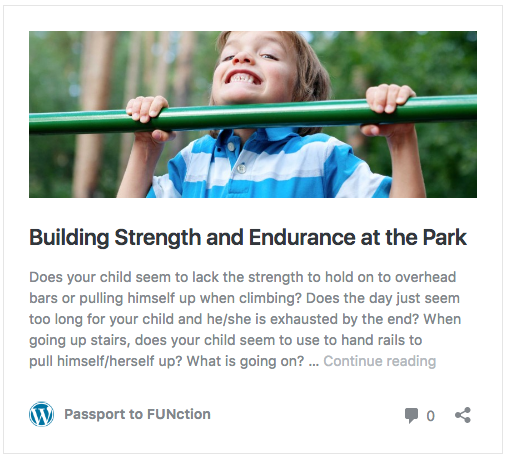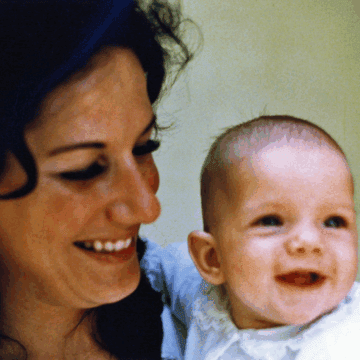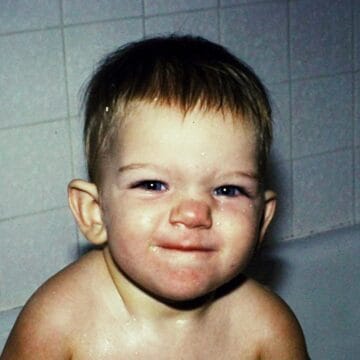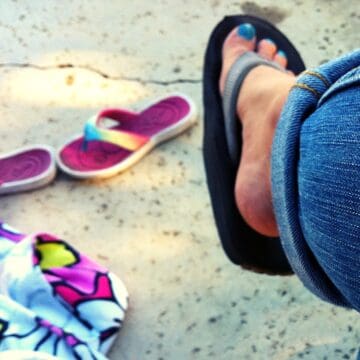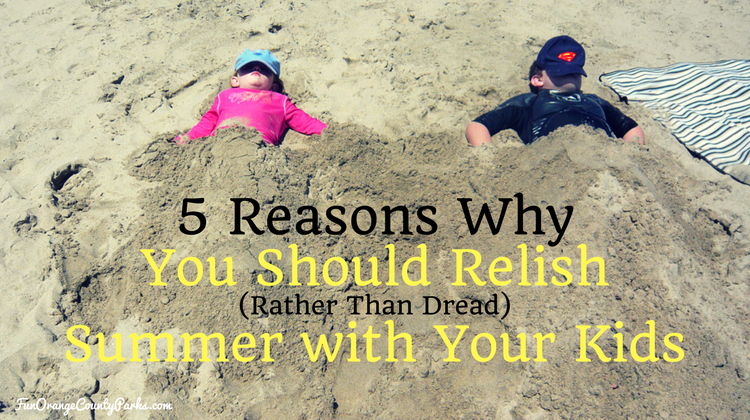I always tell you that playing outdoors is not only good for your kids, it's essential. But I usually only link to articles on the WHY instead of featuring them here, because that's not really my area of expertise.
Along comes an email from Suzanne and Mary -- longtime pediatric occupational therapists, but new bloggers at Passport to FUNction. It's where Suzanne is exploring her affinity for play and parks at Passport to the Park and Mary shares her knowledge of a baby's first year at Passport to Baby's First Year. Their blogs pair perfectly with my blog because they can tell you all about the developmental benefits of outdoor play and share some guided activity ideas while I share the "where to go" part. So please go visit their blog and start following their page on FB. I'm so happy to have found some new community "play friends" who are willing to share about 4 Ways Playgrounds Can Power Brain Development.
So here's Suzanne and Mary's guest post written especially for you . . .
We are two people who LOVE the park. Like REALLY LOVE it. We love it for it’s freedom from walls and clocks and tables and chairs. We love it for the possibility of not wearing shoes, and the chance to turn the sand box into a treasure hunt where pirates have hidden their valuable booty.
As pediatric occupational therapists, we love the possibility of turning the park into a therapeutic wonderland of opportunities for a child to grow and develop. Our job is to create playful platforms to help children work on areas that are difficult for them, and the park is a perfect backdrop! This is why we look at parks and playgrounds with different lenses than many. We have ulterior motives!
While every park has its own unique features, there are key categories that contribute to making any park a total gem for us to visit!
#1 - Grass and/or sand
We know many parents cringe at the thought of the entire sandbox being carried via shoes into the car at the end of a park visit. We totally understand. It’s a mess. We don’t mean to disagree, but not only are we happy when kids get sandy feet, we promote it!
You see, when children play in textures like sand or grass, messages are sent from their skin to their brains giving them information about their surroundings. Messages from the surface of the skin help children refine their internal maps of their bodies, giving them increased awareness of where they are in space. Information from textures, sometimes referred to as tactile input, provides essential information about how to adjust small motions and pressure during a skilled motor task. Having more tactile experiences helps to build a more precise body map, which leads to improvements with gross and fine motor coordination.
Try this: Close your eyes and take a moment to scan your body in your mind. What parts to you notice, or pay attention to? Now place your hands or bare feet on something that has texture and move them around for a minute. Maybe you chose the carpet or some grass in the yard. Close your eyes again. Did your perception of where your hands/feet are increase? Your skin just sent messages to your brain saying “Hey, here I am!” This is awesome body/brain communication for decreasing clumsiness and increasing coordinated movements!
#2 - A suspended swing
Did you know that movement through space can affect our posture, balance and even emotional regulation? Receptors in the inner ear are responsible for letting us know when we are right side up, upside down, spinning or moving in a straight line. This information triggers our muscles to react, helping us to remain upright and safe when our center of gravity is off. Movement activities are like food for the developing brain, and park equipment that moves in varying directions fuels multiple developmental skills! Combining swinging with a skilled task, like catching a beanbag or throwing a ball into a target helps develop motor control, timing, visual motor coordination and totally ups the fun factor!
#3 - An overhead bar
Something as simple as an overhead bar can develop the upper body and hand strength needed for everything from handwriting to sports. Hanging from the bar for your own personal record, working towards crossing monkey bars, or kicking a rolled ball while hanging (picture a life-size foosball goalie!) are all fun options to beef up those muscles! Building hand strength and coordination before a child is required to write and cut at school can insure feelings of success and increased confidence with these types of tasks.
#4 - A slide
Ok, here’s where we break the rules. We LOVE the benefits of climbing UP playground slides! We know it can be a major park faux pas, but it is SOOOO worth it! The act of climbing activates something called the proprioceptive system. As muscles contract and joints move to pull the body upward, the proprioceptive system provides an increased awareness to where body parts are relative to each other. In addition, the input received from climbing up a slide develops strength, increases core stability, and can even impact focus, attention and help to stabilize moods!
Taking some time out of the day to let children play at the park is one of the best investments parents can make. Outside play is becoming more widely recognized for the positive effect it has on the health and wellbeing of children. Not only does it enhance a child’s physical development, it influences social and psychological growth through creative collaborative play, navigating peers and feelings of happiness and accomplishment. So the next time you trek to the park with the family, pat yourself on the back for providing all of these amazing opportunities for your child to grow and learn.
We dare you to look at parks in the same way!
Suzanne Greenwood OTR/L is a University of Southern California graduate with over 16 years of direct service as a pediatric occupational therapist. Suzanne is SIPT (Sensory Integration and Praxis Tests) certified and has completed the fidelity training in Ayres Sensory Integration®. In 2003, Suzanne established Centerpointe for Children, a pediatric OT clinic with a strong emphasis in sensory processing and integration. She has extensive experience in relational, play-based therapy and frequently partners with Marriage and Family Therapists, Psychoanalysts, Psychologists, and Social Workers to support children ages 2-15 of varying diagnoses across environments.
Mary Singer, MS, OTR/L has over 35 years of experience as a pediatric occupational therapist. She has co-authored publications in the field of occupational therapy and has developed educational classes for both therapists and parents of young children. Mary specializes in the evaluation and treatment of babies and children with a wide array of abilities and diagnoses including ADHD, Autism, Developmental Delays, and Sensory Integration and sensory processing disorders. Mary is SIPT (Sensory Integration and Praxis Tests) certified in Ayres Sensory Integration®.


